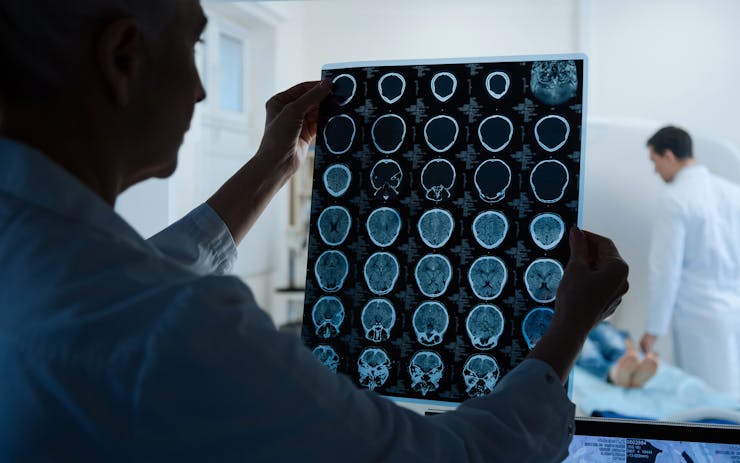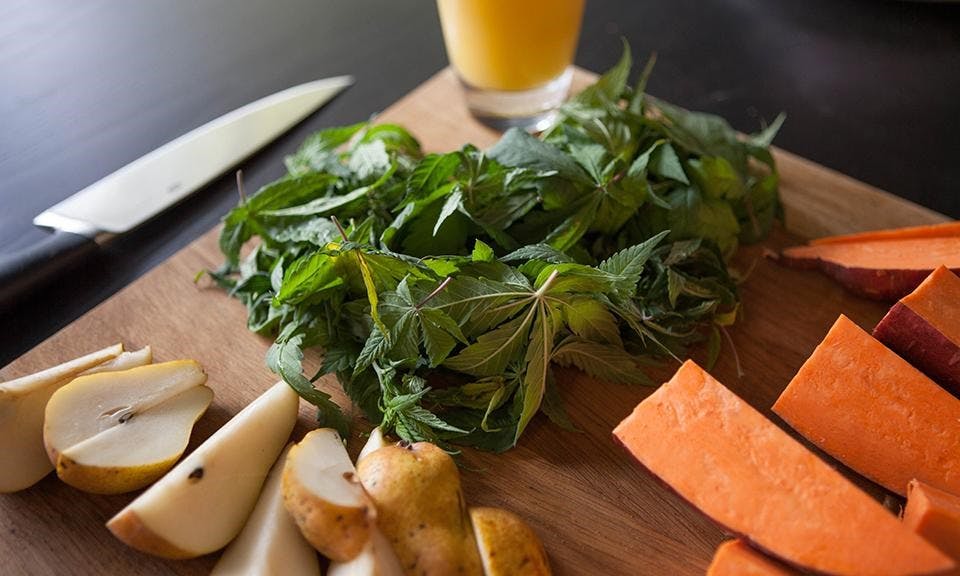When people hear about all of the different health conditions that cannabis can help with, some might wonder how one herb can have so many powerful medical properties without any serious side effects.
This question led researchers to discover a system of physiology working within all of us to constantly maintain homeostasis –or balance– at a cellular level. It was named the endogenous cannabinoid system (endocannabinoid) after the plant that led to its identification. It is one of the most important physiologic systems involved in establishing and maintaining human health.
Most of us don’t realize that our bodies are making cannabinoids all the time. These molecules function a lot like THC and the other cannabinoids found in the plant. Our cells produce and use cannabinoids in precise ways to respond to stress, illness, and injury, thus keeping you healthy. There’s evidence that some people’s endocannabinoid system (ECS) may not be functioning optimally; this can be addressed by adding the right dosage of supplemental cannabinoids from the plant cannabis.
Beyond cannabis, however, certain foods and activities can also help the ECS function optimally, improve your health, and enhance the effectiveness of medical cannabis.
Endocannabinoid-enhancing foods

(kizilkayaphotos/iStock)
Essential fatty acids, chocolate, herbs, spices, and tea can naturally stimulate the ECS.
Essential fatty acids
A healthy ratio of omega-3 and omega-6 fatty acids can enhance the activity of the ECS.[1] Endocannabinoids are produced from arachidonic acid, an omega-6 fatty acid. Having enough arachidonic acid is essential for endocannabinoid production, but having too much may lead to down-regulation of cannabinoid receptors. (Excessive omega-6 intake is also pro-inflammatory. Most western diets already contain an excess of omega-6 oils, commonly found in cooking oils such as safflower, sunflower, corn, and soy, and in animal products like meat, poultry, and eggs.)
Omega-3 fatty acids are needed to balance the omega-6 fats so the ECS can function properly. These fatty acids are much harder to come by in the diet, and are also proven to have cardiovascular and neurological health benefits. An ideal ratio of omega-3 to omega-6 in the diet is 1:1, and the typical western diet often has a 1:10 ratio. Animal sources of omega-3 are the most potent, but the vegetarian sources tend to provide other excellent health benefits.
Sources of endocannabinoid-enhancing fatty acids:
- Hemp seeds and hemp oil
- Flax seeds (grind at home in a coffee grinder) and flax oil
- Chia seeds
- Walnuts
- Sardines and anchovies
- Eggs (pasture-fed or omega-3 enriched only)
Chocolate
Cacao powder contains three compounds that are structurally very similar to endocannabinoids.[2] These compounds can inhibit the breakdown of your body’s own endocannabinoids, resulting in higher endocannabinoid levels, and may have some cannabinoid activity of their own. The content of cannabinoid-like compounds in chocolate varies widely and is highest in dark chocolate and raw cacao. Other compounds in chocolate may be able to help prevent heart disease, stroke, and dementia. Look for at least 70% dark chocolate, or try adding raw cacao nibs to smoothies or cereal!
Herbs and tea
Numerous herbs and teas contain compounds that can enhance the ECS. Beta-caryophyllene is a terpene found in black pepper, lemon balm, hops, cloves, cannabis, oregano, cinnamon, and several other herbs. It selectively stimulates the CB2 receptor, a sought-after property in the development of treatments for inflammatory disorders.
- Echinacea, often used by herbalists for up to two weeks to stimulate the immune system during infections, also contains CB2 agonists.
- Camelia sinensis, commonly known as “tea,” contains a compound that prevents the breakdown of endocannabinoids[3], and another compound that may stimulate the cannabinoid receptors.
- Turmeric, the yellow spice in curry powder, contains curcumin, which also raises endocannabinoid levels amongst numerous other health benefits[4].
Eat organic and avoid plastic
Certain pesticides (e.g. chlorpyrifos and piperonyl butoxide) are known to disrupt the ECS[5]. It’s especially important to choose organic foods when shopping for meat, dairy, and the highest pesticide-containing produce. Phthalates, frequently added to plastic and tin food containers and water bottles, are known to block cannabinoid receptors and disrupt the body’s hormonal system[6]. Choose glass or stainless steel food containers and packaging whenever possible, and never eat food that’s been heated in plastic.
Alcohol
Regular use of moderate to high quantities of alcohol can also impair the ECS[7], so for optimal health and endocannabinoid function, please use moderation when drinking or avoid alcohol entirely.
Endocannabinoid-enhancing activities

(EmirMemedovski/iStock)
Certain activities can naturally enhance the ECS’s function, improve your health, increase the effectiveness of medicinal cannabis, and help you feel great.
Stress-reducing activities
While chronic stress can deplete your ECS, a highly tuned ECS can protect you from the detrimental effects of stress[7]. Incorporating exercise into your daily routine will keep your ECS well-tuned, but only if you enjoy it! Animal studies teach us that if you force yourself to exercise, your ECS will interpret the activity as stress, but freely choosing and enjoying the same activity can have the opposite effect of stress and actually increase endocannabinoid levels. Socializing can also be great for stress reduction and enhancing ECS function. Rats in social isolation produced less cannabinoid receptors, while social play and grooming behavior increased function of the ECS.
Here are a few suggested endocannabinoid-enhancing and health-promoting activities:
- Social interaction
- Unstructured play time (this is important for adults too!)
- Meditation
- Yoga
- Massage
- Osteopathic Manipulation (OMT)
- Acupuncture
- Breathing exercises
- Any voluntary and enjoyable exercise
The wellness section at Healer.com features simple exercises that are easy for everyone and designed to stimulate the ECS and augment the effects of cannabis.
Endocannabinoids and their receptors are found throughout the body: in the brain, organs, connective tissues, glands, and immune cells. In each tissue, the cannabinoid system performs different tasks, but the goal is always the same: homeostasis, the maintenance of a stable internal environment despite fluctuations in the external environment. Your body naturally produces its own cannabinoids. Proper dosages of cannabis can also up-regulate and tonify your ECS. The plant, however, is not the only way to support your ECS. You can stimulate your ECS naturally with delicious endocannabinoid-enhancing foods and enjoyable activities which can lead to widespread health benefits.
Content for this article is based on the Introduction to Cannabis 4-day online course at Healer.com, a medical cannabis patient education resource. Find the free course and downloadable Food & Activity Guide at https://healer.com/programs/introduction-to-cannabis/






